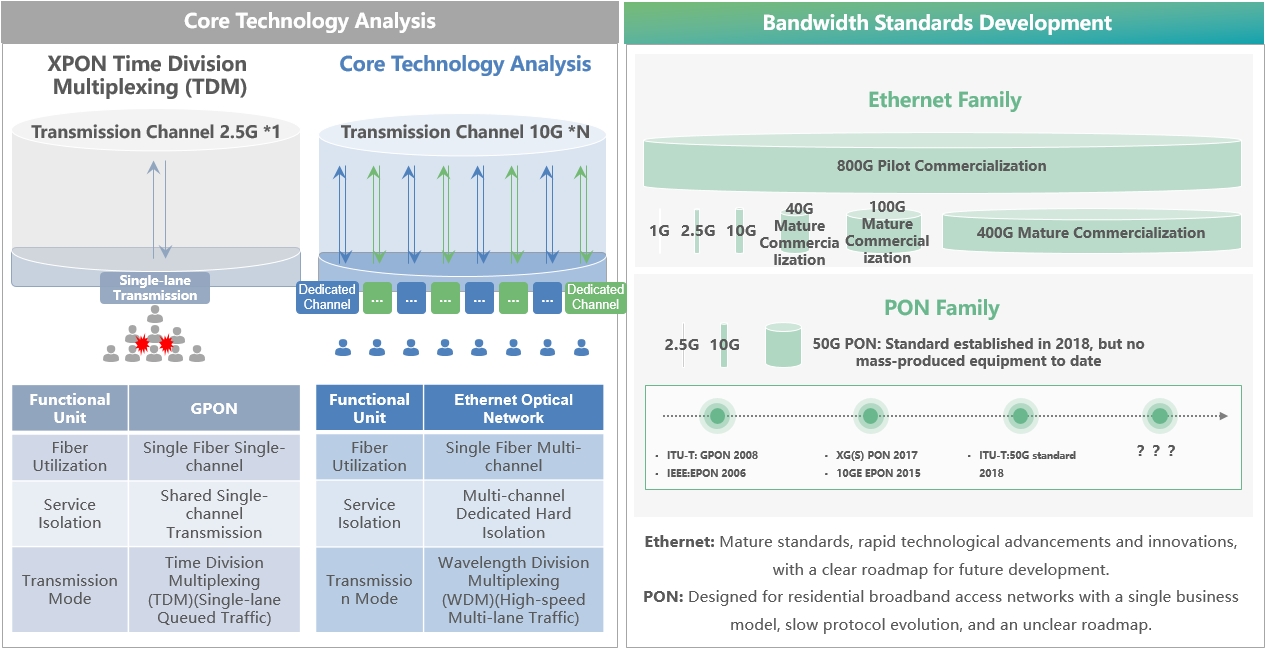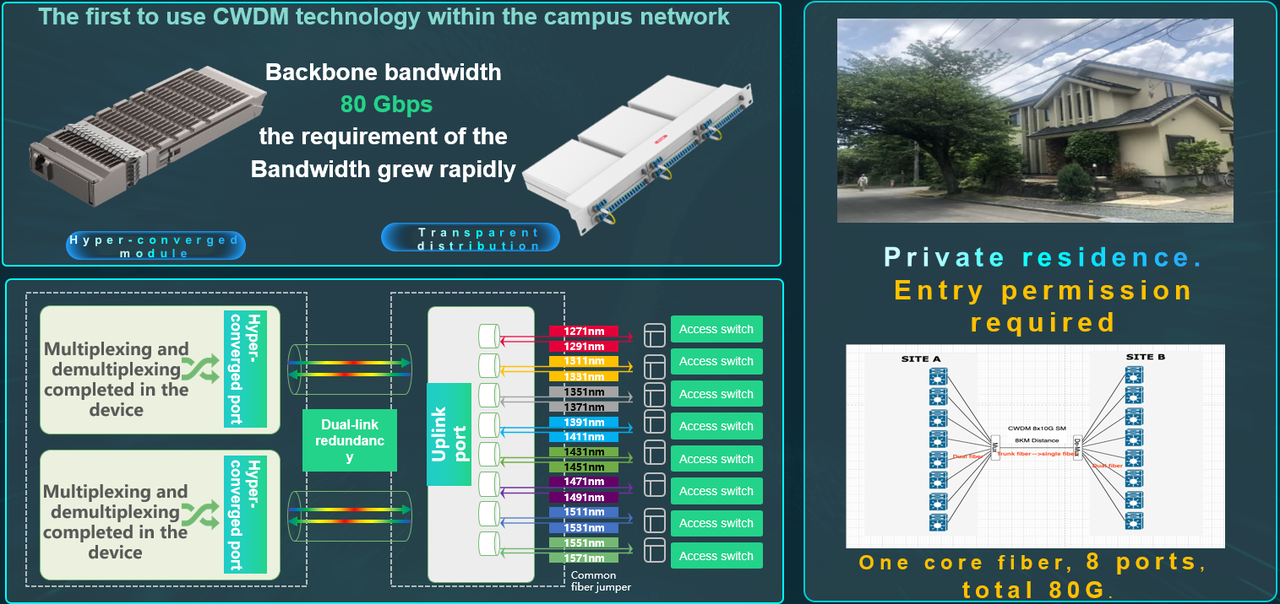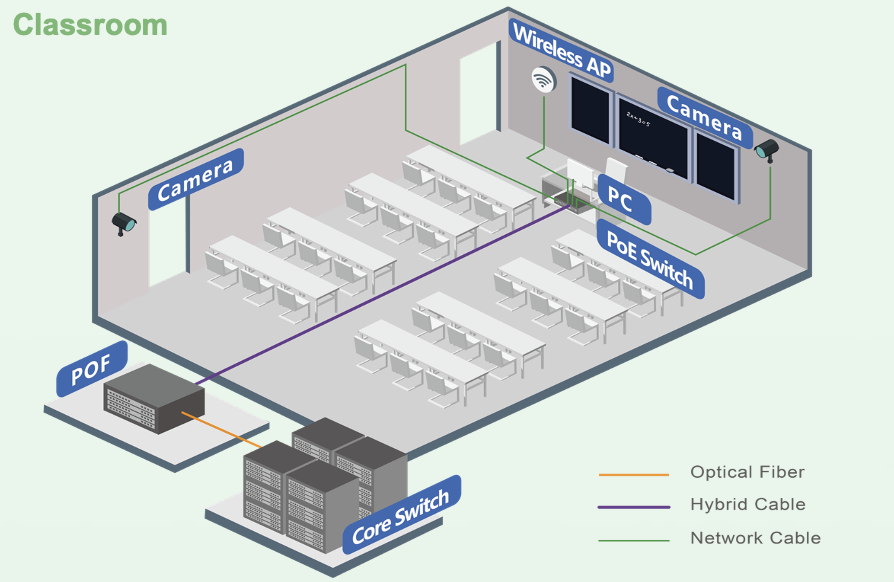Challenges Faced by Campus Networks

Ethernet vs. PON Protocol Evolution

Figure 1: Comparison of Ethernet and PON Protocols
Rooted in Continuous Innovation in Higher Education
Unique Design of the Simplified Optical Ethernet 3.0 Solution

Addressing Power Supply Issues in Optical Network Deployment
 Figure 3: Power Supply Diagram for Hybrid Optical Cables
Figure 3: Power Supply Diagram for Hybrid Optical CablesEfficient Management and Operation of All-Optical Networks
In terms of wireless operations and maintenance, Ruijie has launched an AI-driven intelligent network optimization platform, demonstrating the benefits of using SOE in business. Utilizing big data and simulation models, it presents users with a digital twin of the wireless network, mirroring the physical network, which is crucial for understanding the benefits of implementing campus networks. With the support of the big data & AI platform, proactive fault prediction can be achieved, enabling intelligent network optimization. Based on a network digital twin map for operations and maintenance, issues such as wireless coverage, interference, roaming, access, and authentication can be visualized, allowing for one-click local adjustments to enhance critical business experiences. Quick fault localization and root cause analysis based on AI algorithms address various wireless challenges.
Just having good wireless devices does not guarantee a good network experience. The dynamic nature of spatial environments requires regular optimization to ensure wireless devices operate at their best, enhancing the student experience with network solutions. Ruijie's WIS platform has evolved from a "device-centric" approach to a "user experience-driven" network twin platform. It provides digital services throughout the entire lifecycle, including planning, construction, management, maintenance, optimization, diagnosis, prediction, and decision-making, facilitating rapid network deployment, high business assurance, fully automated operations, and automated user experiences.
One Network, One Management End
Continuous Growth and Innovation Leadership
Looking ahead, Ruijie will continue to provide effective, user-friendly solutions for the high-quality development of higher education, focusing on the construction of digital campuses.
Featured blogs
- CXL 3.0: Solving New Memory Problems in Data Centres (Part 2)
- Ruijie RALB Technology: Revolutionizing Data Center Network Congestion with Advanced Load Balancing
- Multi-Tenant Isolation Technology in AIGC Networks—Data Security and Performance Stability
- Multi-dimensional Comparison and Analysis of AIGC Network Card Dual Uplink Technical Architecture
- A Brief Discussion on the Technical Advantages of the LPO Module in the AIGC Computing Power Network












